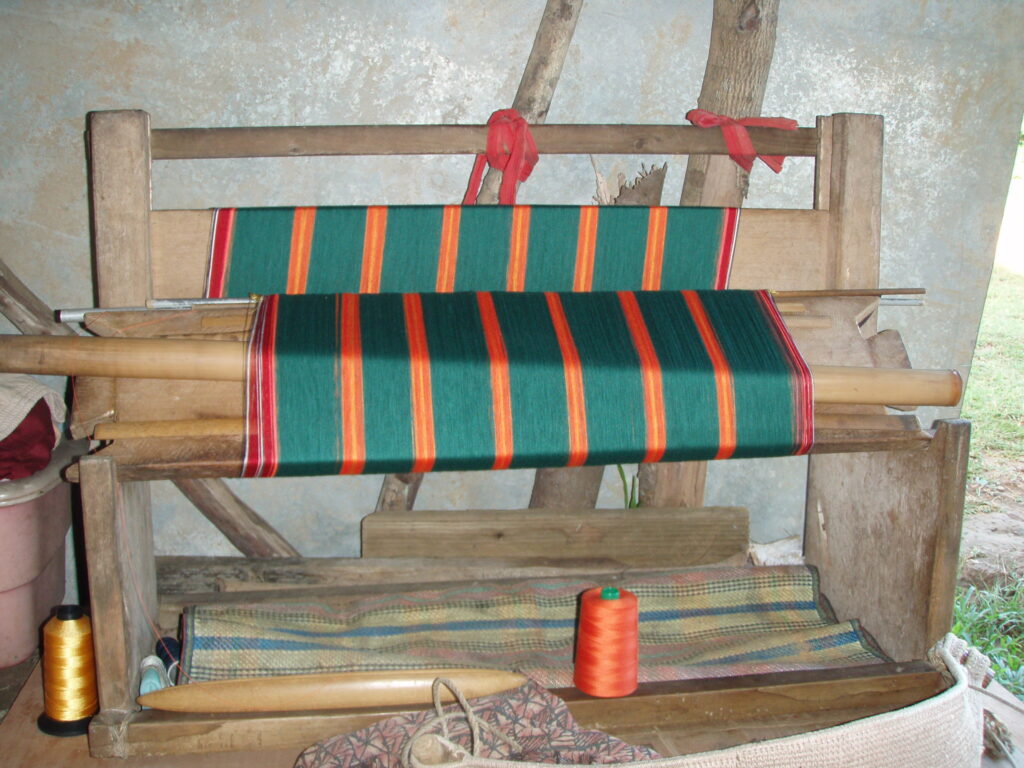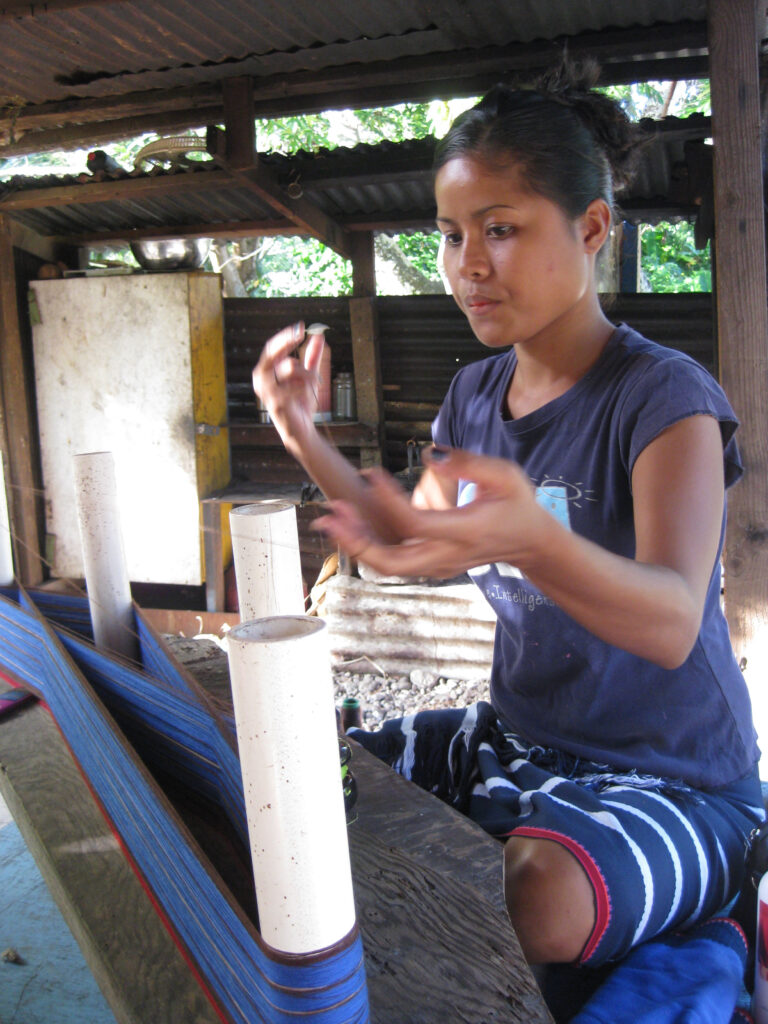Woven Skirts of the Outer Islands of Yap, Micronesia

In the West, the artistic value assigned to cloth is often “secondary:” in the Pacific “however, social, political, and spiritual meaning are attached to cloth in its material, iconography, and use.” 2 The woven textiles produced in the Caroline Islands may be the Pacific’s foremost example. Skirts woven on a back-strap loom, or lavalavas, are both a daily worn item, as well as a rich symbol integrated into traditional belief and practice.
Likewise, lavalavas have emerged as a defining symbol of islanders and their traditions in the eyes of outsiders. “It is for loom-weaving that Micronesian textiles are best known… they were strong with a continuous spiral wrap that encircled a warp-beam attached to a frame and a second unattached warp-beam… The breast-beam was tied to a strap that encircled the waist of the weaver, whose body tension held the warp taut.” 3

While the lavalava, and similarly crafted belts, were once produced across the Caroline Islands, today the practiced is limited to Western and Central Caroline islands and atolls, comprising today’s Outer Islands of Yap State. 4 The skirts’ traditional significance “far exceeds their function simply as items of daily wear.” The lavalava is nothing less than a “highly condensed visual expression of social and economic relations, ritual affairs, and the aesthetic ideals of Micronesian society.” 5
Among these Caroline Islanders, loom weaving is “highly developed” and weavers have long demonstrated “singular ingenuity and resourcefulness” in their weaving. 6 The lavalava, or wrap around skirt, is the most evident and “singular” example. 7 Even today, the lavalava remains the customary daily dress throughout the Outer Islands of Yap.” 8

Migration of Outer Islanders into district centers such as Yap, as well as US territories such as Guam, has added further to the symbolism of the lavalava, affording migrants a highly visible and instantly recognizable symbol connecting them to each other and their past.
Hear about the importance of weaving from Outer Island Women.
2 D’Alleva, Anne. “Art of the Pacific.” Orion, London. 1998.
3 Kaeppler, Adrienne. “The Pacific Arts of Polynesia & Micronesia.” Oxford University Press, Oxford. 2008.
4 Matsumura, Akira. “Contributions to the Ethnography of Micronesia.” Imperial University of Japan. Tokyo. 1918; see also LeBar, Frank. “The Material Culture of Truk.” Yale University, New Haven. 1964
5 Ibid Feldman and Rubenstein, pages 45-56
6 Kjellgren, Eric. “Oceania: Arts of the Pacific Islands in the Metropolitan Museum of Art.” Metropolitan Museum of Art, New York, New York. Page 274; and Martin, Lynn. “An Approach to Central Carolinian Aesthetics,” Masters Thesis, University of Hawaii, July 1981. Pages 36-49
7 Ibid Martin, page 36
8 Rubenstein, Donald. “Cultural Preservation of Traditional Textiles on Fais Island in Micronesia, Problem and Paradoxes.” Paper prepared for the second ASEAN Textile Symposium, Manila, Philippines. February 2-3. 2001.
